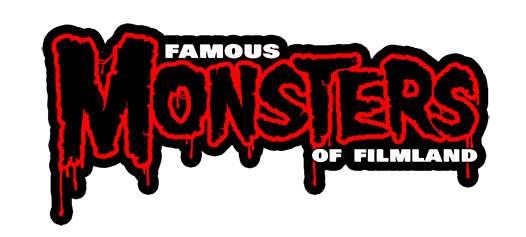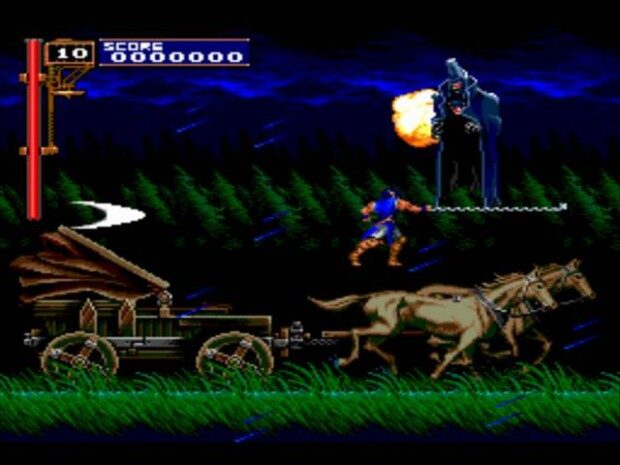As a kid, I used to envy Japan, and looking back on it, I was right. When it came to video games in the 90s, Japan was where it was at. Or as Marty McFly once said, “What do you mean, Doc? All the best stuff is made in Japan.” Major games and systems used to be released earlier in Japan, and there were even amazing games that didn’t get released in North America and Europe. Case in point: CASTLEVANIA: RONDO OF BLOOD, a true classic that didn’t see the light of day here until the remake (plus original included) CASTLEVANIA: THE DRACULA X CHRONICLES, released fourteen years later.
RONDO OF BLOOD does what classic CASTLEVANIA does best. Whips, monsters, candles, one crazy castle, and battling Dracula once again.

While plenty of CASTLEVANIA games had done this before (and brilliantly), RONDO OF BLOOD seems to take it one step further. It has the best designed levels, enemies, and (very difficult but rewarding) bosses. It’s not because this game adds a lot to the formula but rather, the design itself is ingenuously crafted. Everything has a place and a purpose and there’s never a part that feels cheap or unfair.
Speaking of challenge, the difficulty here is absolutely perfect. Very challenging but completely beatable. Like I said before, this is a well designed game. The difficulty isn’t superficial and every part has several ways of getting around. There’s even less pits than usual, meaning that it requires more skill, rather than simply hoping you push the jump button at the exact moment. And unlike SUPER CASTLEVANIA IV, the bosses are very difficult from the start. Difficult, but not impossible (with “technics”, which shows you the best way to beat each boss).
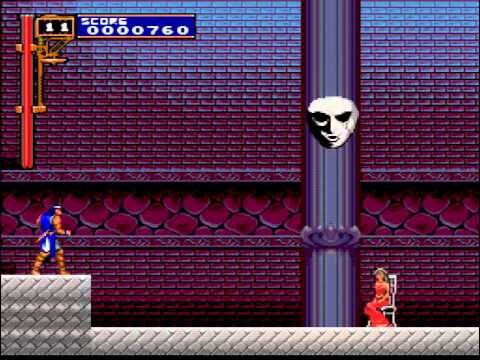
There are some major improvements to the tried and true formula. For starters, there’s the save system. Not only does it take away the pain of having to jot down passwords, you can also go back and play any previous levels you want.
Being able to replay levels is extremely important, as there are plenty of secret alternate levels to find and explore. That makes a total of 12 levels (plus prologue), each with their own unique settings, enemies, bosses, and alternate pathways. Along with finding alternate levels, you can also find and rescue four maidens.
One of the maidens is Maria Renard, who is a playable character. Not only does she have a different play style than Richter, she kicks all kinds of ass. Maria runs faster, can double jump, and has dove attacks which boomerang around, making her perfect for speed running and evasive play styles. Not to mention that she has her own set of special weapons (her animal companions). It’s worth playing through the levels with each character, as Richter and Maria make it feel like two different games.
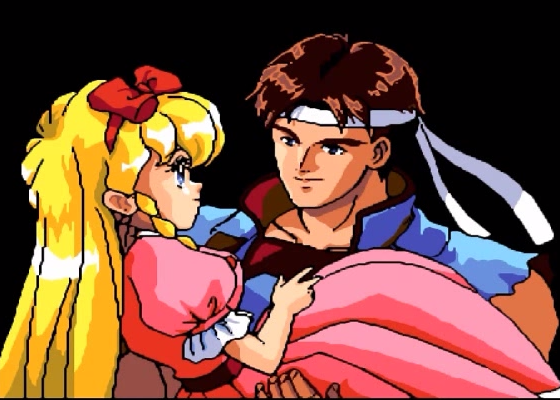
It’s worth mentioning that this is the first CASTLEVANIA game where your special weapon will be dropped and can be picked back up if you get another special weapon. In previous CASTLEVANIA games, if you accidentally picked up an inferior weapon, you were screwed until you could finally find your favorite special weapon again. Speaking of special weapons, you can do an item crash, spending more hearts in order to do a crazy special weapon attack and, more importantly, give yourself a brief second of invincibility.
RONDO OF BLOOD makes the most out of the TurboGrafx-16/PC Engine by adding fully voiced cut scenes. Call them charmingly corny or horribly outdated, but it makes Richter the first Belmont to feel like a fully fleshed out character, rather than simply a dude with a whip.

All of the other production values are A+ here. RONDO OF BLOOD has some of the best arrangements and compositions out of the franchise, and RICHTER BELMONT’S THEME surpasses SIMON BELMONT’S THEME as one of my favorite CASTLEVANIA tunes. The only problem is that with the early CD technology, there are a few awkward seconds of silence while the tracks re-loop; not to mention that while the more authentic sound effects are welcome, the technology hadn’t reached true authenticity yet, leading to some odd gurgly distortions.
The graphics are some of the best in the series and it shows how powerful the TurboGrafx-16 was compared to the SNES and Genesis. There’s a wide palette of colors, backgrounds are extremely detailed and animated, and each sprite is unique with complex animations. ‘Nuff said.
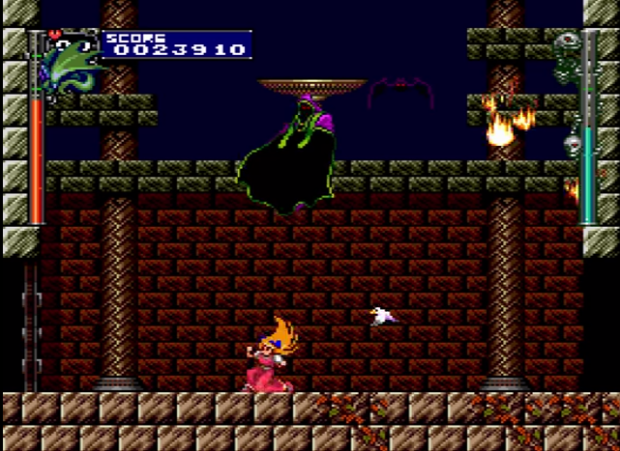
Are there any negative aspects to the game? Not really, even if some of the fun innovations from previous games, such as whipping in eight directions and swinging around hooks, are removed. I will say that it’s annoying that it requires up+attack to do a special weapon attack, the downside of only having two action buttons rather than three or four with the Genesis/SNES.
But what’s really annoying is no longer having greater control over jumping around (especially with Richter). Fortunately there aren’t too many pits but I can’t tell you how many times I failed to dodge an attack or make a platform simply because I had zero control over where I fell.
Nevertheless, this is an incredible, amazing, [insert positive adjective] game. You know when I said SUPER CASTLEVANIA IV might be my favorite CASTLEVANIA game? Scratch that, RONDO OF BLOOD tops that by a bare inch to make this perhaps my favorite CASTLEVANIA game of all time. Don’t double guess yourself and just buy it through the (Wii) Virtual Console, emulator, or if you’ve got the cash and luck, find it for the TurboGrafx-16.
RELEASE DATE: October 29th, 1993 (Japan)
PUBLISHER: Konami
DEVELOPER: Konami
ESRB: N/A

